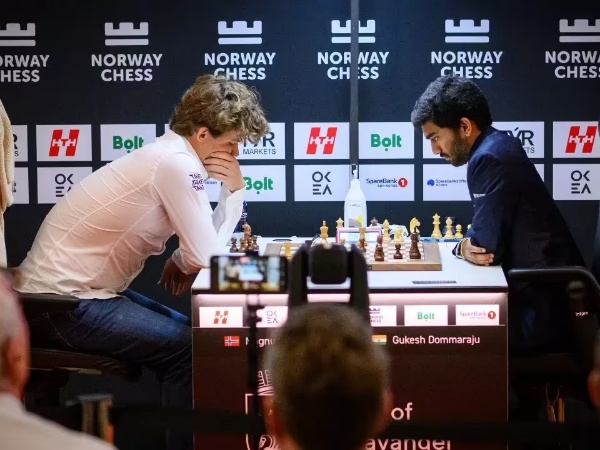views : 785
4 Min Read
Sports world must desist from tying mental health thread to every reaction of athletes
Should banging a table in disappointment, as indeed Magnus Carlsen did in his match against D Gukesh in the recently concluded Norway Chess tournament, count as sports rage? Or was it just a poor reaction, one that even he would come to regret before long? Such a debate may be welcome but the idea of some hinting at such ‘rage’ as an indication of mental health issues is worrisome.
It is very important for all stakeholders, especially the champions of mental health, to distinguish between an expression of disappointment and frustration from rage. Just as it is critical to differentiate between feeling low after losing a match and clinical depression. At a time when flagging mental health issues is a trend, the right messages must be conveyed by all concerned.
In an era when everyone puts out visuals, bolstered with dramatic music, instantly on social media and others make them viral, it is imperative that analysts interpret the two-dimensional images aptly. As five-time world champion Viswanathan Anand pointed out in a conversation with PTI, such incidents (and worse) have happened in Chess competitions.
“The only difference is the camera, not the incident,” he said, pointing out how the obtrusive video camera has come to shape the perceptions of athletes in the minds of the fans and everyone else. Anand cited examples, including how he had felt exactly the same way after he blew a game against Carlsen in 2022.
Come to think of it, the humble pressure cooker in our kitchens can assist in making the differentiation. The weight whistle is the basic outlet; the safety valve is the second chance for excess steam to be let out and regulate pressure. And only when both these fail does the pressure cooker lid get blown off. Each of these situations is a pressure release but they are not the same.
The slamming of tennis racquets on court, the smashing of cricket bats against dressing room doors, the letting out of guttural screams by athletes, the bending of golf clubs in anger and, of course, banging a clenched fist on the chess table are all possibly the equal of the weight whistle – the simplest form of release of pent up pressure.
An athlete’s behaviour that offends the codes of a sport and invokes the wrath of umpires and referees is rather like the blowing of the safety valve. On the sports field, it is rare that athlete behaviour can be equated to the blowing of the lid of the pressure cooker. Some call it the Amygdala hijack.
Some notorious instances are Zinadine Zidane’s head butt of Marco Materazzi in the 2006 FIFA World Cup final. Mike Tyson bit off a part of Evander Holyfield’s ear during the WBA World Heavyweight Championship. Uruguayan Luis Suarez’s bit Giorgio Chiellini in a 2014 FIFA World Cup match after having served a 10-match ban for a similar offence a year earlier.
Suarez offered a glimpse of his thinking – or its lack – when he explained in his book, Crossing the Line: My Story. “The adrenaline levels in a game can be so high; the pulse is racing and sometimes the brain does not keep up,” he wrote. The pressure mounts and there is no release valve… The pent up frustration and feeling that it was my fault that things were not working out reached a point where I couldn’t contain it anymore.”
If Carlsen’s pressure release is termed as rage, one shudders to think what really rage is. Surely, his reaction was not a case of Amygdala hijack. Of course, it was not attractive to watch. But expecting exponents of a mental game to be ice cool in their reaction to defeat, especially when it is snatched from the cusp of victory in a tense contest, is not only impractical but also unfair to them.
It is a pity that the world, and its uncle, wants to dismiss the reaction of players as rage when they have painfully blundered a game from a superior position. Are they supposed to keep their emotions bottled up and in check until after they move away from the public eye, and most certainly, the prying lens of countless cameras.
While conversations on mental health in the world of sports are very welcome, the fear is of people overdoing it to such an extent that cases that genuinely need attention flying under the radar. The sporting community could eventually be left with a difficult challenge of having to sift the real from the imagined. And if we bring things to such a pass, we have only ourselves to blame.
